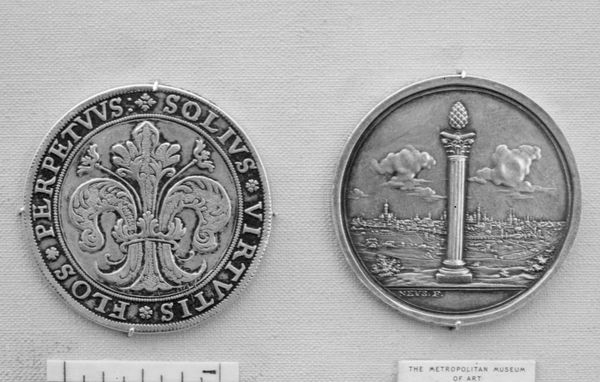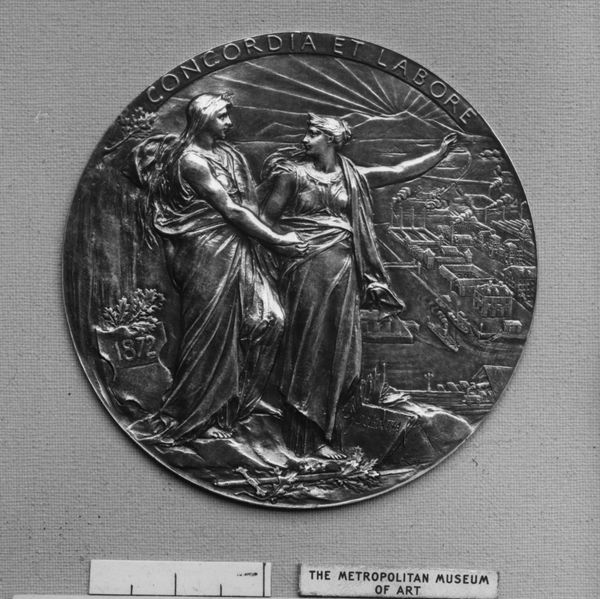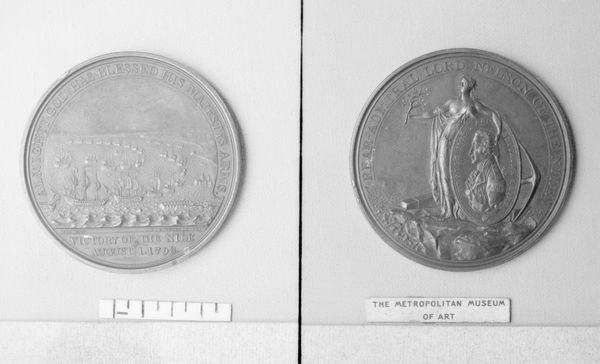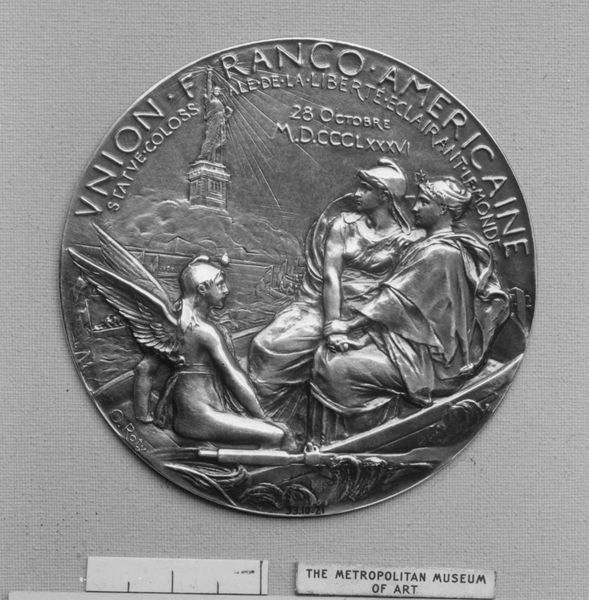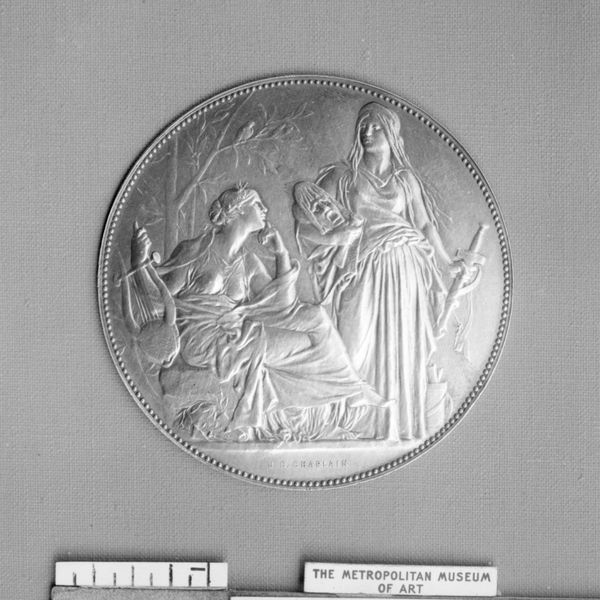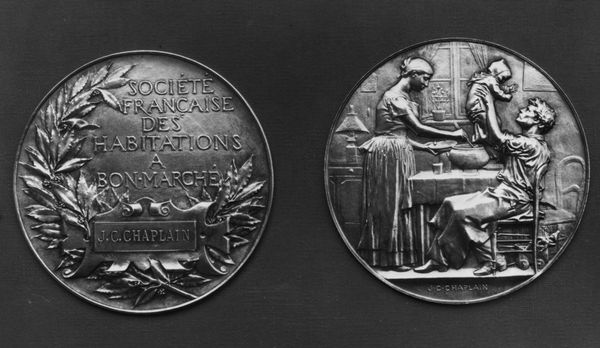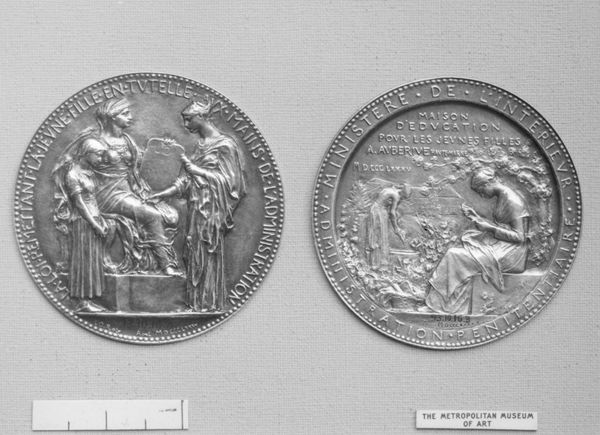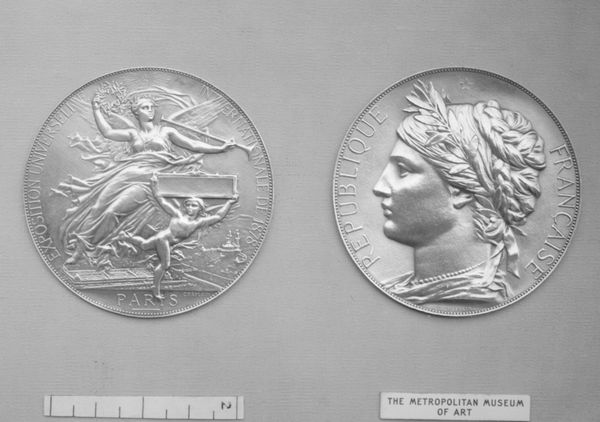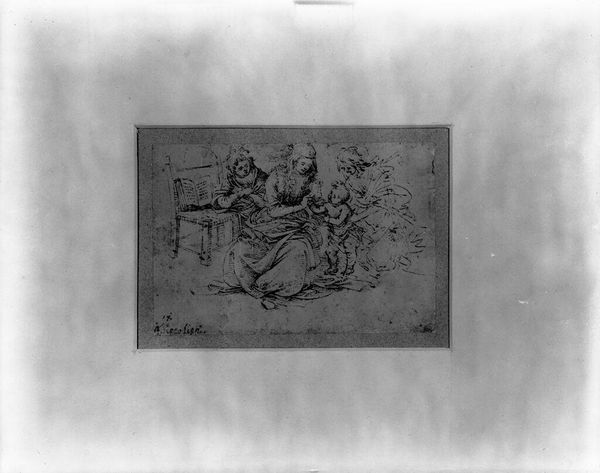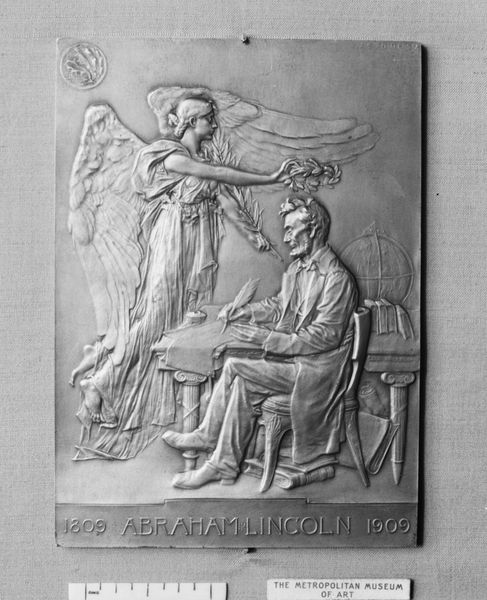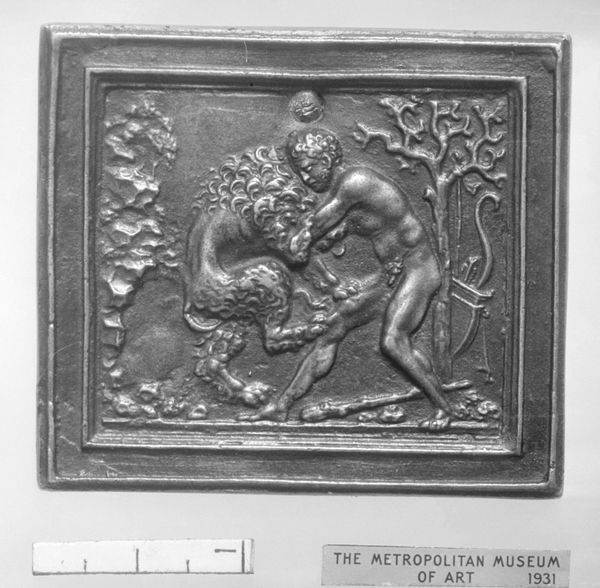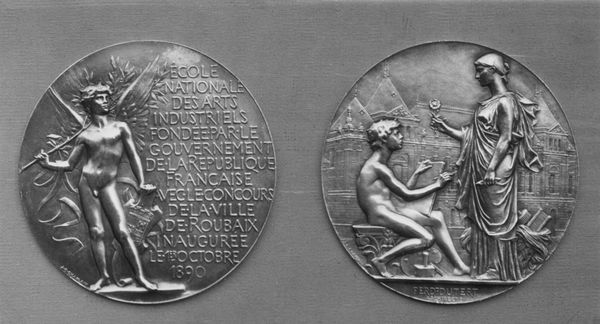
relief, sculpture
#
portrait
#
medal
#
art-nouveau
#
decorative element
#
allegory
#
relief
#
figuration
#
sculpture
#
decorative-art
#
monochrome
Dimensions: 2 1/16 × 1 1/2 in. (52 × 38 mm)
Copyright: Public Domain
Curator: Before us, we have Louis-Oscar Roty's 1895 relief sculpture "In Praise of Mariani Coca-Wine", a rather striking Art Nouveau piece. Editor: It feels almost eerie, a monochrome vision advertising... coca wine? It certainly projects a specific mood – not entirely celebratory, despite its function. Curator: Precisely. The medal presents a fascinating dichotomy in its composition. One side depicts a semi-nude nymph, or perhaps a mother figure, offering a drink to a child. Editor: And the other side blatantly advertises the wine with floral elements and bold typography: “Health to the Strong, Life to the Weak.” It's a potent visual encapsulation of late 19th-century attitudes toward health, medicine, and perhaps, moral laxity around nascent pharmaceutical culture. Curator: I agree; the allegory speaks volumes about the perceived benefits and the societal endorsement of such elixirs. Note how Roty employs the visual language of classical sculpture and relief work here, and infuses it with decorative elements that would define the emerging Art Nouveau aesthetic, such as flowing text embedded into floral motifs. Editor: Let’s not forget what ‘coca’ implies here. This wasn’t just some innocent wine; it was laced with cocaine! That idyllic maternal scene takes on a far more complicated dimension. We might even see the nymph as administering an early form of opiate medicine—sanctioned harm under the guise of care. Curator: Yes, and to appreciate this, you really have to deconstruct how the classical and modern interplay in this context. The clean, refined lines versus the decadent indulgence of its implicit claims. Editor: And I'd challenge the reading that coca-wine may only have been perceived as ‘decadent.’ I would propose that it was viewed as "empowering" to workers during an era when societal pressures to produce and work constantly often came at the cost of individual well-being. Its popularity came with an endorsement from society for that very reason. Curator: Indeed. Roty encapsulates complex societal narratives into what would appear a seemingly simple advertising piece. A great testament to decoding visual information on all its levels. Editor: A potent reminder that the visual arts always reflect—and participate in—the ethical quandaries of their time.
Comments
No comments
Be the first to comment and join the conversation on the ultimate creative platform.

